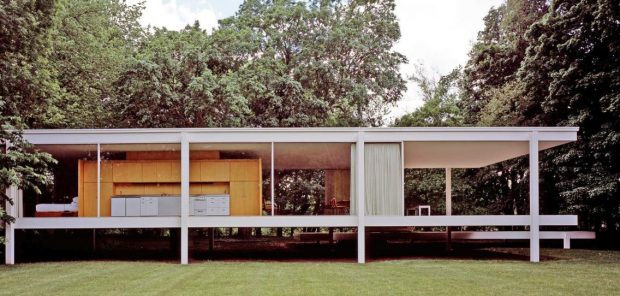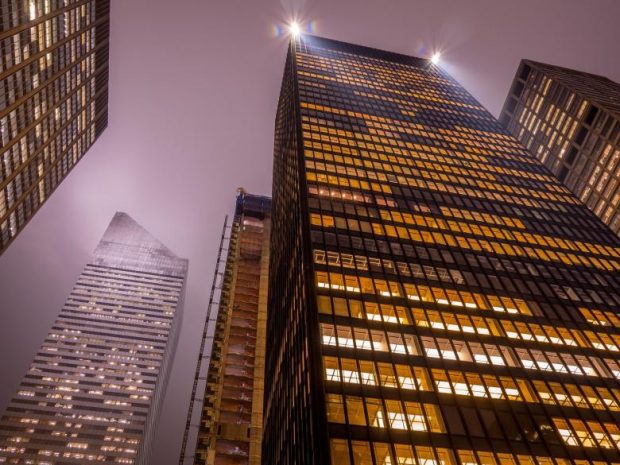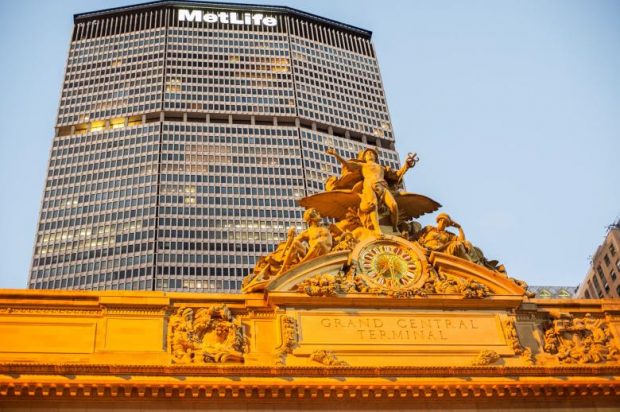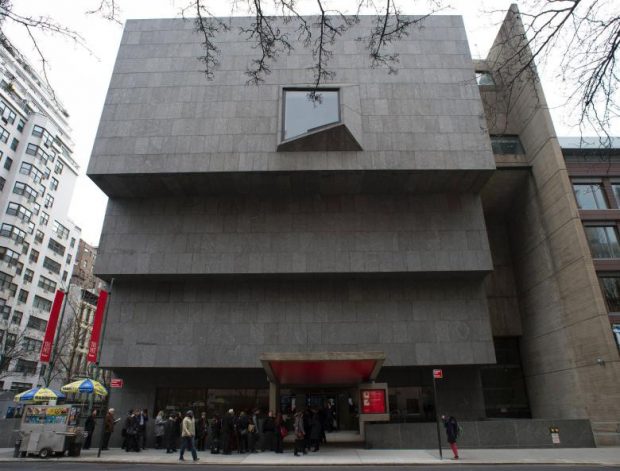
The famous art and design school has its roots in Weimar, Dessau, and Berlin. But Bauhaus greats such as Walter Gropius and Ludwig Mies van der Rohe also left their mark in the USA.
Chaos has reigned at the New York Museum of Modern Art on 53rd Street for two years now. Due to a never-ending major renovation, some part of the museum is always closed.
The lounge is reached from the new entrance via a terrazzo, glass, and steel staircase that has survived all the renovations and extensions of the house since 1939. The staircase is something like the immutable core of the MoMa.
If you want to learn something about the history of the origin of this staircase, you don’t have to look far. Directly at the entrance, the visitor passes Oskar Schlemmer’s painting “Bauhaustreppe” from 1932. It shows Bauhaus students in Dessau, where Schlemmer had taught, a nostalgic reminder of the idea factory for modern design, which was about to be closed by the Nazis at the time.

Far ahead of its time: the Farnsworth House in Illinois designed by Mies van der Rohe
Credit: Carol M. Highsmith/Buyenlarge/Getty Images
MoMa’s architectural homage to the Bauhaus, which seeps through to the museum’s latest incarnation, is more than a casual gesture. In hardly any other place in North America in the spirit of the Bauhaus as alive as in the art complex in the center of Manhattan, which has now grown to cover an entire block.
READ: Fashion Industry Boom in New York: What Makes You Want to Invest in “American Fashion”
When MoMA opened in New York in 1929, founding director Alfred Barr made no secret of his commitment to the Bauhaus. Together with the then young architect Philip Johnson, who was to help shape MoMa as architecture curator, he had embarked on a trip to Europe two years earlier that had had a profound impact on him. One of the most important stages of the journey was a stay in Dessau, where they met Bauhaus founder Walter Gropius, Bauhaus teacher and artist László Moholy-Nagy, and painter Paul Klee.
The entire original organization of the MoMa was based on the Bauhaus. MoMA was the first art institution in North America to look beyond the visual arts to include architecture as well as design and photography.
One of the earliest blockbuster exhibitions was Johnson’s Modern Architecture Show, which opened at MoMA in 1932. In addition to Gropius, the architects Mies van der Rohe and Marcel Breuer, with whom Johnson was close friends at the time, were also represented.
READ:Chinese New Years Festival in New York: Happy New Year
Johnson also helped Gropius and Breuer to gain a foothold in the USA after 1933 and arranged their first commissions. In 1938, when almost all of the Bauhaus protagonists, Moholy-Nagy, van der Rohe, Gropius, and Breuer, were already in the USA, Johnson finally organized the first major Bauhaus exhibition together with Barr at the MoMA. With this show, the art school and its ideas finally arrived in the New World.
At the same time as the MoMa exhibition, the protagonists of the Bauhaus began their work in North America. Walter Gropius and Marcel Breuer began their work at the Harvard Graduate School of Design, where they had found employment through the mediation of Philip Johnson. From here they revolutionized the way architecture was taught and thought about in the United States.
Meanwhile, Mies van der Rohe, László Moholy-Nagy, and Ludwig Hilberseimer went to Chicago and founded the New Bauhaus there, which later became the Institute of Design at the Illinois Institute of Technology. Anni and Josef Albers accepted professorships at Black Mountain College in North Carolina, where they taught among other artists such as Cy Twombly, Robert Rauschenberg, and Susan Weil.
Thus, while the war was still raging in Europe, the focus of the Bauhaus had clearly shifted to the USA, where the ideas and designs lived on and developed further. The school’s influence on everything from town planning and town planning to the way American homes and offices were decorated was profound.
READ: What About Gifts: Ideas for the Day of Love

Mies van der Rohe completed the Seagram Building on Park Avenue in New York in 1958
Source: Getty Images
It is no coincidence that the American heirs to the Bauhaus left their most visible footprint in New York. New York was and is the capital of modernism, and the philosophy of the Bauhaus, strict functionalism, the love of clarity, rationality, and industrial reproducibility fell on particularly fertile ground here.
The most prominent example of Bauhaus design in New York is undoubtedly the Seagram Building on Park Avenue, which Mies van der Rohe completed in 1958. The heiress to the Seagram liquor fortune, Phyllis Lambert, gave van der Rohe an unlimited budget for construction to run wild, which he did.
READ: The Emirates A380 Experience: Emirates A380 Experience in the Dubai Mall
The 38-story glass and steel tower, the most expensive in history at the time at $41 million, exposed its insides to the outside in a way that had never been seen before. The visible steel skeleton was the most radical rejection of the fasadism of early modern New York architecture to date. In doing so, the Seagram Building set the tone for the architecture of commercial buildings around the world for decades.

The MetLife Building was grafted onto Grand Central Station in 1963 with the assistance of Walter Gropius
Credit: Getty Images/Lonely Planet Image/Kevin Clogstoun
Along with the Lever House across the street, the Seagram in New York is a gem of the mid-20th century international style that was reimagining the city at the time. The ensemble is completed by the MetLife Building, brutally grafted onto Grand Central Station in 1963 with the assistance of Walter Gropius. The tower has long been criticized by New Yorkers for blocking views along expansive Park Avenue.
Meanwhile, in the Seagram Building’s newly opened restaurant, you can enjoy van der Rohe’s interior design style in its purest form. The new owner, tycoon, and art collector Aby Rosen had furniture manufacturer Knoll reissue Mies pieces like the bar stools and his Brno chair.

Marcel Breuer initially met with criticism for his concrete fortress on the Upper East Side
Source: AFP/Getty Images
While the Seagram Building was popular from the start, Marcel Breuer’s first significant construction divided New York’s population. When the Whitney Museum of American Art moved into Breuer’s concrete fort on Madison Avenue in 1966, many critics spoke of a “brutalistic monstrosity”.
But in recent years the tide has turned. Classical Modernism and its architectural style, Brutalism, are not only finding favor in New York. The Breuer Building is increasingly becoming a New York pride – even if it remains a foreign element in the Manhattan cityscape due to its impact. Steel magnate Frick’s collection will be moving in next year – the Whitney has been based in the Meatpacking District for several years in a home designed by architect Renzo Piano.
However, long before Breuer designed the concrete fort on the Upper East Side, he had accepted a commission from MoMA. In 1948, for an exhibition on modern living, Breuer built a model home that stood in the museum’s sculpture garden.
After the exhibition, oil billionaire Rockefeller’s heirs purchased the home and had it relocated to the family property in Pocantico Hills just outside of town. It can be visited there today, having been inhabited by members of the family until a few years ago.
In New York, however, the spirit of the Bauhaus is not only alive in the buildings of the Bauhaus diaspora. The International Style, which she influenced, was the preferred architectural style in New York from the mid-1940s through the 1970s, including the 1974 World Trade Center towers that fell victim to the September 11, 2001, terrorist attacks.
For his part, Philip Johnson, who brought van der Rohe and Gropius to the United States, left behind monuments of ultra-modernism on the streets of New York, including the New York State Theater at Lincoln Center, now the David H. Koch Theater.
His glass house in New Canaan near New York, together with the Gropius house in Pocantico, is a model for the Bauhaus vision of modern life and living. And of course, the MoMa on 53rd Street, which is currently being remodeled for the third time, was his vision, with core elements such as the Bauhaus staircase and the sculpture garden remaining intact.
Like us on Facebook for more stories like this: